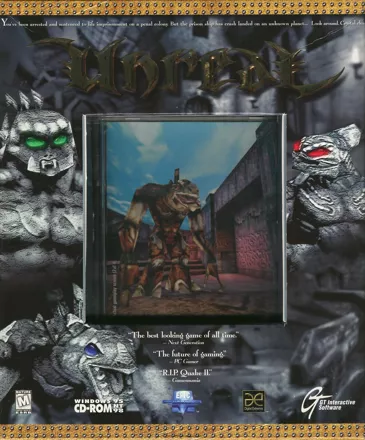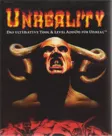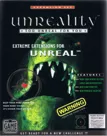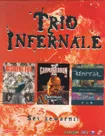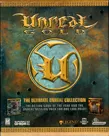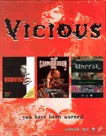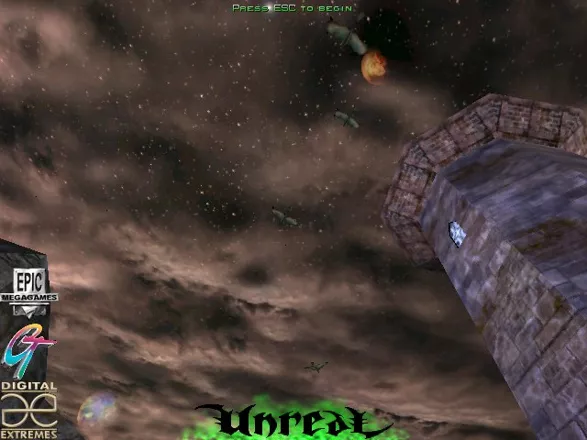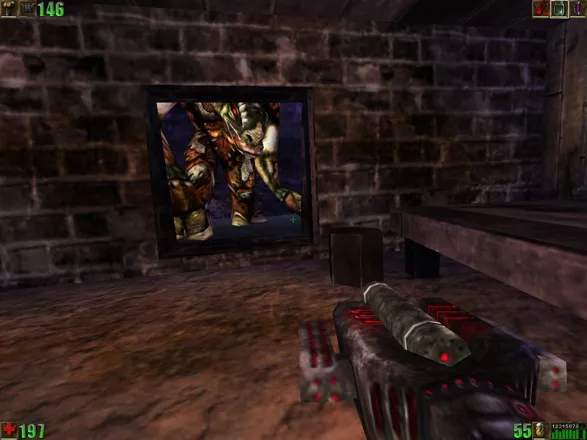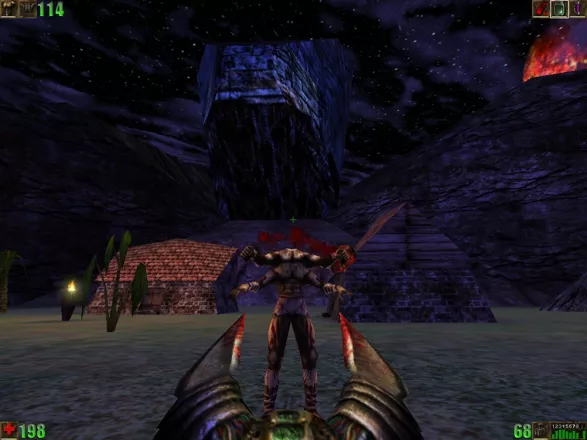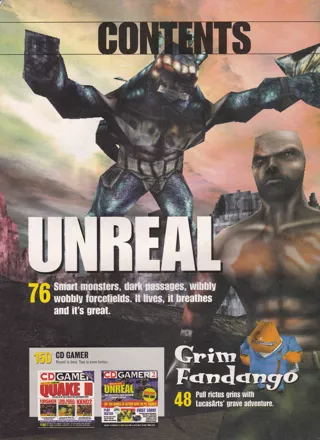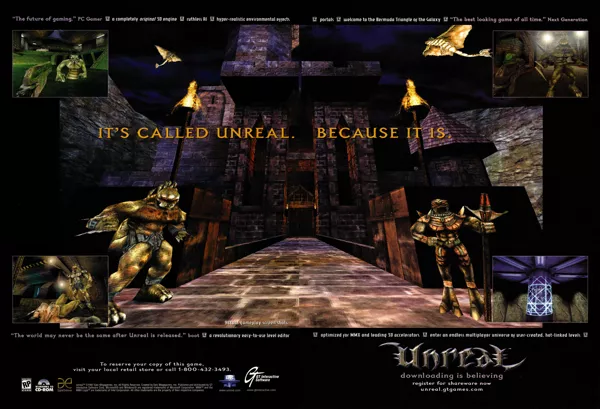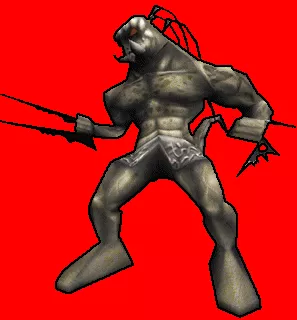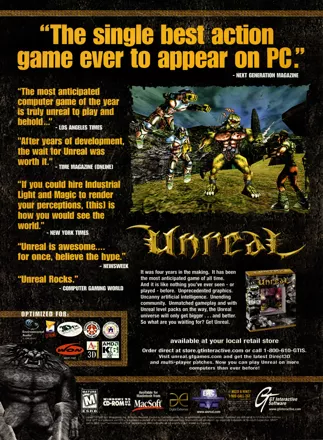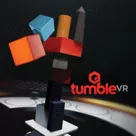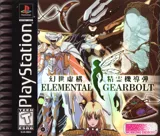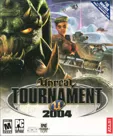Unreal
-
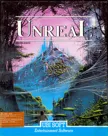 Unreal
(1990 on
Amiga, 1991 on
DOS,
Atari ST)
Unreal
(1990 on
Amiga, 1991 on
DOS,
Atari ST)
Description official descriptions
The prison transport ship Vortex Rikers was on its way to a penal moon colony when an unplanned course change led to it being caught in the gravity well of an uncharted planet. Not many aboard survive the crash landing, and those that do find this new world to be one full of strange beauty, but also many dangers. Not only is it full of dangerous wildlife, but it is the setting of a conflict between the ruthless Skaarj and the peaceful natives they have enslaved, the Nali. As one of the surviving prisoners, the player must escape the wreckage of the Rikers, navigate through Nali villages and temples, Skaarj mines and refineries, other crashed ships and many more locations, with the ultimate goal of finding a way off the planet.
Unreal is a first-person shooter. Its story is mostly told through short text messages, deciphered via a translator from computer stations, personal logs, books and signs. The game features a weapon arsenal of ten guns, each with two firing modes. Besides standard pistols, rocket/grenade launchers, miniguns and sniper rifles, there are such items as the Bio Rifle, which fires blobs of toxic waste which stick to walls and enemies, the Flak Cannon, which sprays deadly shrapnel, and the Razorjack, which shoots spinning blades that ricochet off walls. The secondary firing mode might allow a charged shot, sacrifice accuracy for speed, or even make it possible to guide the projectile.
The game also includes a multiplayer mode. Ten deathmatch maps are available for free-for-all, team deathmatch or a variant called "King of the Hill". A special mode is DarkMatch, for which one special map is available. In DarkMatch, the map is without any illumination, and players must use a searchlight to see anything. The deathmatch modes can be played against bots, and the game also offers a cooperative version of the single player campaign.
Unreal introduced the game engine of the same name, which employs such tricks as colored lighting, curved surfaces, reflective surfaces, "detail" textures (via multi-texturing), and real time interactive mixed digital music.
Spellings
- 虚幻世界 - Simplified Chinese spelling
Groups +
Screenshots
Promos
Videos
Add Trailer or Gameplay Video +1 point
See any errors or missing info for this game?
You can submit a correction, contribute trivia, add to a game group, add a related site or alternate title.
Credits (Windows version)
82 People (65 developers, 17 thanks) · View all
| Lead Design | |
| Graphics / 3D Programming | |
| AI Programming | |
| Level / Scenario Design | |
| Graphics / Artwork | |
| Animator | |
| Music | |
| Programming | |
| Additional Programming | |
| Sound Effects | |
| [ full credits ] | |
Reviews
Critics
Average score: 90% (based on 42 ratings)
Players
Average score: 4.0 out of 5 (based on 177 ratings with 11 reviews)
Fantastic graphics, not much game.
The Good
Unreal was a sizeable hit, and is one of a handful of games to have been in development for ages, and not be terrible. Announced shortly before the release of 'Quake', it took three years to be released, to mixed reviews. On the one hand, everybody agreed that it looks fantastic - the 3D engine seemed to be only slightly modified for the recent sequel, and the water effects are unsurpassed - but on the other hand it's not as much fun as, say, 'Quake 2'. The sweeping levels are impressive - combining 'Delta Force'-style distances with polygonal graphics effectively, and the soundtrack, although often descending into Jean Michel Jarre-esque cheese, fits the game well. There's even a go at having a plot - it gets forgotten about quickly, but it's nice to see that 'Half-Life' didn't spring from nothing.
The Bad
Despite looking the bee's knees, it's actually very disappointing as a game. The game seems extremely empty, and the huge size of some of the levels makes it seem very impersonal. The creators seemed unsure as to whether it should be a Quake-style out-and-out blaster, or something deeper, a semi-RPG exploration game, and it falls between these stools - there are long sequences in which you meet no monsters, whilst reading small, dull text messages that outline the 'plot'. The monsters, when you find them, seem out of place - they look cartoonish, and dive around like frantic ants. Furthermore, when you try to shoot them you realise that your guns are astonishingly weak. For example, later on, you are attacked by wasps that take two hits from a laser pistol to kill. It doesn't help the atmosphere at all.
Worst of all were the bugs - only half-finished on release, the original game required an extensive series of patches before being playable on anything other than a basic 3DFX Voodoo 1 card. As a multiplayer game it was unplayably slow, which seems odd nowadays, given that 'Unreal Tournament' is fantastic.
The Bottom Line
A graphical showcase, albiet a dull one.
Windows · by Ashley Pomeroy (225) · 2000
What I consider to be the best game ever made.
The Good
Unreal is what I call the perfect game. It was released in '98 and even though "Half-Life" topped the charts, it didn't give you the awesome feeling of being in a colossal world, the big change of environment, the stellar graphics, the great replay value, as huge enemies, as awesome soundtrack, and as great final boss. Now I've played Half-Life. I love the game, I even bought the complete pack in Steam and I've looked at both games and Unreal simply stands out as being the better game. Anyway, in Unreal you get to play through gigantic maps with many incredible weapons. You fight your way through a place called Na Pali to save the peaceful inhabitants called the Nali from their evil overlords called the Raj. Depending on what difficulty you play it can take you weeks to finish this game.
The Bad
Some weapons you can't reload and is sometimes very necessary because you don't know how much ammo is left in a clip.
Too much to read. You get a translator witch picks up messages from all kinds of places, you don't need to read them but can be very helpful sometimes. Some times it will feel like there's a message to be read every 5 meters.
The Bottom Line
A must play game!! You can pick up the Unreal anthology very cheap these days. Out of all the old-school fps games you need to play this one the biggest priority. It can't apply to all gamers but for you who love old Sci-Fi games you need to play this.
Windows · by buckarooskij (2) · 2010
The Good
This game is just plain amazing. It's graphically the most beautiful game ever created (especially when you consider most games just two or three years older have less appealing prerendered graphics!), the music is simply unbelievable (go Straylight go!) and even the game itself is really good.
I can definitely appreciate the quality of the game, especially when you consider the fact that it was never intended to be released, only as a demo of their 3D engine. The graphics are even more impressive than Quake III: Arena's and the music/sound effects beat any first person shooter to date.
The Bad
The first thing missing in this game is an atmosphere; no claustrophobic hallways as in Doom, no frantic hate as in Wolfenstein 3D. While it does have some "andrenaline-rush" parts in the game the one-player game is continuously dull in atmosphere. The multiplayer game is also a bit slow, but still rocks.
The second problem are the insane system requirements - I couldn't run it on a Pentium 166 with Voodoo 2 at an acceptable level, and the framerate only gets an "OK" label on a P2-350 with Riva TNT (for a year-old game?!)...
But hey, it's worth it!
The Bottom Line
Simply mind-boggling audiovisually. Even if you don't like the genre, you'll gawk at the marvelling beauty of this game more often than not.
Windows · by Tomer Gabel (4538) · 1999
Discussion
| Subject | By | Date |
|---|---|---|
| Opinions from FPS fans? | Unicorn Lynx (181775) | Nov 8, 2011 |
Trivia
Avatar
One of director James Cameron's pet projects after Titanic was an epic sci-fi extravaganza called Avatar, much hyped in Hollywood circles at the time and poised to redefine the notion of a truly alien world on the big screen.
The project fell apart initially, but the scriptment (a hybrid between a script and a treatment ) by James Cameron still exists. Interestingly, you can find quite a few similarities between it and Unreal:
- Both feature a basic plot premise where, by virtue of circumstances mostly beyond his control, a reluctant hero becomes the saviour of the native race of an alien planet forced to mine their land for ore of utmost importance to an invading race coming from the skies. In both cases the saviour is seen by the natives as someone who also came from the skies and is thus initially met with some alarm or distrust only to be later hailed as a pseudo-messiah.
- The native race is called "Na'vi" in Avatar and "Nali" in Unreal. The physical description of the Na'vi by Cameron can be visualised as basically a cross between the Nalis' tall, lean, slender bodies and the IceSkaarjs' blueish skin colour patterns, facial features, ponytail-like dreadlocks and caudal appendages.
- The Nali in Unreal worship goddess Vandora. The home planet of the Na'vi in Avatar (which the Na'vi worship as a goddess entity) is named Pandora.
- In Avatar, one of the most dazzling alien settings described is a huge set of sky mountains, "like floating islands among the clouds". One of the most memorable vistas in Unreal is Na Pali, thousands of miles up in the cloudy sky amidst a host of floating mountains. The main sky mountain range in Avatar is called "Hallelujah Mountains". The main Unreal level set in Na Pali is called "Na Pali Haven". Both include beautiful visual references to waterfalls streaming down the cliffs and dissolving into the clouds below.
- The Earth ship in Avatar is called "ISV-Prometheus". One of the levels in Unreal takes place in the wreck of a Terran ship called "ISV-Kran". Even more striking, in the expansion pack Return to Na Pali, the crashed ship the player is asked to salvage is called "Prometheus".
- One of the deadly examples of local fauna in Unreal is the Manta, essentially a flying manta-ray. In Avatar, one of the most lethal aerial creatures is the Bansheeray, basically a flying manta-ray. The expansion Return to Na Pali even features a Giant Manta, while in Avatar one of the most formidable predators is a giant Bansheeray, which Cameron dubbed "Great Leonopteryx".
- In the two stories (especially Return to Na Pali, on Unreal's end), a plot point arises from the fact the precious ore behind the invasion of the planet ("tarydium" in Unreal, "unobtanium" in Avatar) causes problems in the scanners.
Unreal was in development for several years before its release in 1998. The Avatar scriptment was probably finished as early as 1996-97. Bearing all the above in mind the temptation to start wondering about further suspicious parallels may be quite strong, but in spite of these similarities both titles have few else in common and many aspects actually veer off in wildly different directions. Even so, the coinciding factors can make for an interesting minutia comparison.
Bots
Unreal was the first FPS shooter to official include Bots, A.I. characters which mimic the actions of live players during multiplayer deathmatches. Although previously fan-programmed Bots had been created for games like Quake and DOOM, Unreal was the first game where the Bots were officially included by the game's programmers.
Many features of the Bot A.I. were used to program the A.I. of the game's single player enemies, particularly the Skaarj. As a result Unreal's single player enemies had a degree of flexibility previously unseen in their ability to fight, manuever and navigate levels.
Combined attack
The "combined attack" mentioned in the manual applies to the shock rifle. Fire a plasma blob with the secondary fire button, then, without moving, fire a shot with the primary fire button. The shot will pierce the plasma blob in midair, exploding it (with a nice blast radius).
Cover art
The reason the jewel case is so prominently displayed in the box design is because there were four different jewel case cover designs, all of them screen shots (look carefully at the second box scan and you'll see "Actual Gameplay Screen (2/4)"). This was a clever way to show off the game's graphic superiority.
Cut features
Some Unreal-Previews in 1997 told us about some proposed features which didn't make it into the final game. For example: - the character can morph to four other shapes - you can build your own deathmatch-arenas and - connect them via Internet. So you can - walk from one Deathmatch-Arena to another via teleporters...
Eightball
The eightball weapon in the game is called like that because it originally fired 8 missiles. Play testing revealed 6 made a more balanced weapon, but the name stuck.
Engine
The Unreal engine had a unique feature. It could render using DirectX, OpenGl, and Software Mode. It even included support for 3dfx Glide drivers. Most 3d engines before and since only support DirectX or OpenGL, but not both. It took 4 years to design. It had several features that weren't included in the Quake II engine: * Volumetric Lighting: An effect for generating fog, smoke or plasma. It was used in great effect for obscuring view. * Dynamic Lighting: A real time render of colored lights. You could mix colored light sources to produce other colors. You also could see moving shadows
German version
Violence was reduced for the German version of Unreal. The "reduced gore" option is missing from the menus, enemies simply disappear instead of being gibbed, and severed heads also vanish instead of flying through the air.
But most notable are changes to the opening level: Corpses and blood stains were removed as well as background sound effects and scripted fight scenes - drastically changing the game's atmosphere. Some pain screams and similar background sound effects are also missing in later levels.
Graphics
Unreal has a lot of "scene" tricks, like colored lighting, dithered texturing in software for 8-bit displays, XMs/ITs for music, music from scene musicians, and other engine enhancements. The name "Unreal" is the same name used by a pioneering demo from Future Crew.
Microsoft
The game's technical advances at the time attracted so much attention that even Bill Gates himself requested a meeting, in absolute secrecy, with the developers of Unreal. The meeting took place in early 1997, but by that time GT Interactive had already acquired publishing rights for the game.
References
- Do you remember the Pirate game in Orlando's Disney World: "Pirates of the Caribbean"? Go to the level "Serpent Canyon". When the boat enters the very long and very dark cave, turn on your flashlight and look to your left. You will find an interesting sign.
- The Demonlord you meet in level 29 shoots rockets at you - but they aren't the normal rockets! On them, the Canadian flag is printed along with the word 'PEACEMAKER'.
- The prison ship you arrived on was called the USS Vortex Rikers. It shares a name with Riker's Island prison. Coincidence?
Soundtrack
A soundtrack CD by Straylight Productions was released in 1998. It can be bought at http://www.synsoniq.com.
Tracklist: 1. Main Title - Vertex Rikers - Dusk Horizon - Dig - Chizra - Chizra Ceremony - Visions - Ruins - Skytown - Cellars of Dasa - Erosion - Isotoxin - Crater - Bluff Eversmoking - The Queen - Guardian of Stone - Wargate - The Fifth Hub - End Title - Unreal Euro Dance Mix
The entire music soundtrack is also available in the music folder on both the CD and when you have installed the game. However, the music-format is in UMX and can't be played on your default player. You will need a program that run that sort of format, you can find it here on http://www.modplug.com
UMX
Unreal re-introduced a music format that was popularized on the Amiga computers. The UMX format is a variation of the Mod file.
Mod files are packed files that contain instrument samples and tracker formatted music. The Amiga had dedicated hardware that could load and play instrument samples at various speeds to produce different pitches.
Awards
- GameStar (Germany)
- Issue 12/1999 - #78 in the "100 Most Important PC Games of the Nineties" ranking
- PC Gamer
- April 2000 - #26 in the "Readers' All-Time Top 50 Games Poll"
Information also contributed by Alan Chan, Emepol, Felix Knoke, Ghostbreed, Manfred Glubber, MAT, PCGamer77, re_fold, Rúben Alvim, Scott Monster, Silverblade, Zaghadka and Zovni
Analytics
Upgrade to MobyPro to view research rankings!
Related Sites +
-
Beyond Unreal
A great archival and fan website. -
Blinded by Reality: The True Story Behind the Creation of Unreal
GameSpot covered the history of Unreal's development in this lengthy article. -
Fan Site for Unreal
A nice fan site for Unreal -
Hints for Unreal
Hints written for the Universal Hint System by a player of Unreal -
OldUnreal
Offers a comprehensive archive for all things Unreal, as well as the latest unofficial patches. -
Planet Unreal
All things Unreal, including Unreal Tournament. -
Readme File
Transcription of the entire Unreal "readme" file -
The Official UNREAL Home Page
official game page from the Epic Games website from 1996, archived by the Wayback Machine -
Unreal Archives
A site dedicated to preserving all user-built single player content for Unreal, RTNP and Unreal Tournament. -
Unreal Universe
More all things Unreal, including Unreal Tournament. -
UnrealSP
The premier site for custom singleplayer maps.
Identifiers +
Contribute
Are you familiar with this game? Help document and preserve this entry in video game history! If your contribution is approved, you will earn points and be credited as a contributor.
Contributors to this Entry
Game added by Trixter.
Macintosh added by Ace of Sevens.
Additional contributors: Adam Baratz, Unicorn Lynx, Jeanne, erc, oct, Patrick Bregger, Talos, MrFlibble.
Game added October 28, 1999. Last modified March 25, 2024.
